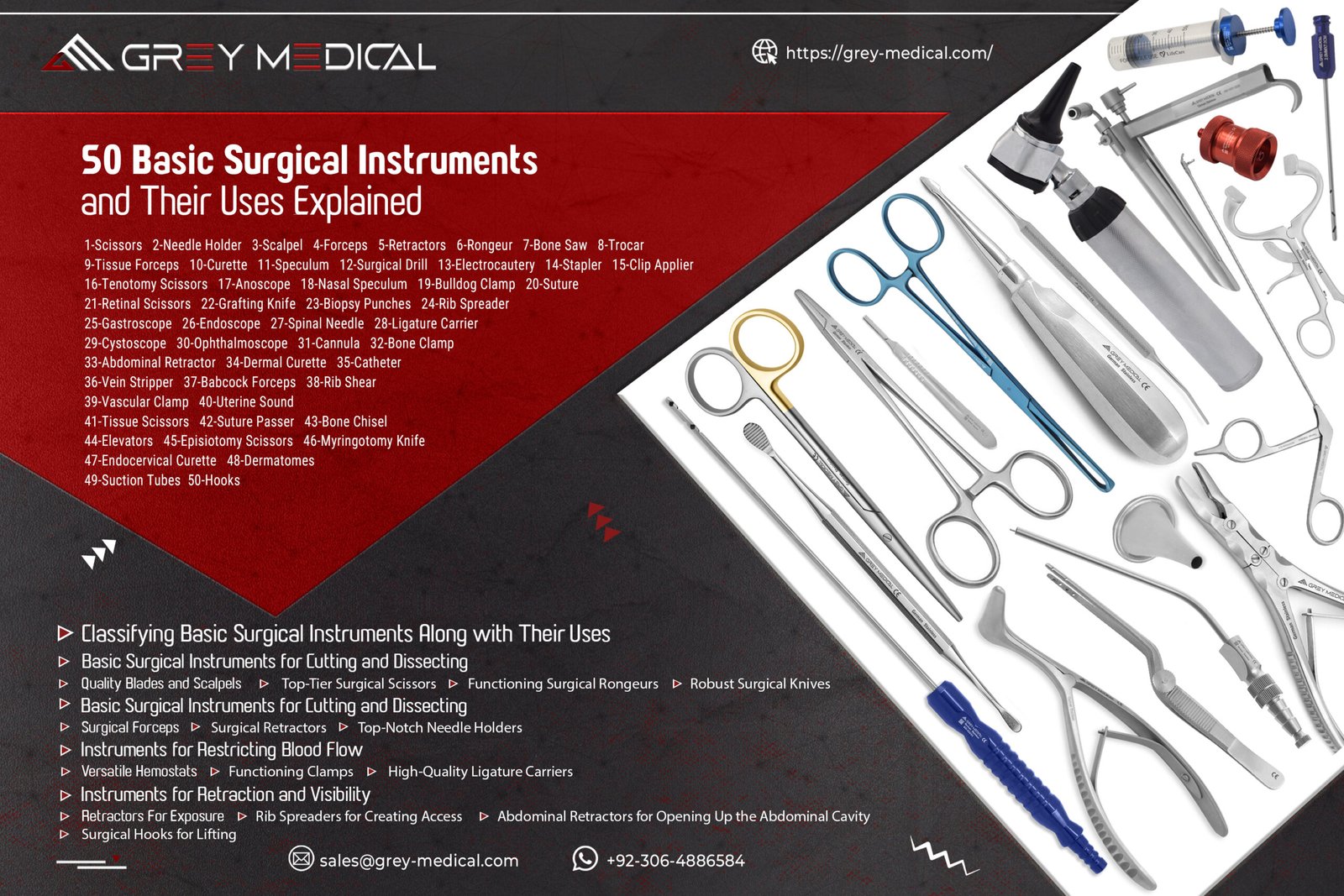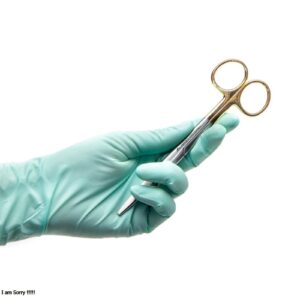
Surgery is a delicate art where precision dictates the outcome. While the skill of the surgeon is paramount, the tools they wield play an equally critical role in patient safety and procedural success. From simple scalpels to complex retractors, the medical field relies heavily on dependable surgical equipment.
The Critical Role of Precision in the Operating Room
Every surgical procedure, whether a routine appendectomy or complex neurosurgery, demands exactness. A surgeon’s hands are only as effective as the tools they hold. If an instrument is dull, unbalanced, or made from inferior materials, it introduces unnecessary risk.
High-quality tools allow for cleaner incisions, better visibility, and more effective tissue manipulation. This directly translates to reduced trauma for the patient, faster healing times, and lower rates of postoperative complications. For instance, a perfectly sharpened scissor ensures that tissue is cut cleanly rather than crushed, which promotes better vascular recovery.
In the high-stakes environment of an operating room, reliability is non-negotiable. Surgeons need to know that a clamp will hold securely or that a needle holder will release at the exact moment required. This trust in their equipment allows medical professionals to focus entirely on the patient rather than struggling with their tools.
Understanding the Categories of Medical Tools
Medical tools generally fall into specific categories based on their function during a procedure. Understanding these classifications helps in appreciating the complexity of surgical trays.
Cutting and Dissecting
These are perhaps the most recognizable tools. Scalpels, surgical scissors, and bone cutters fall into this category. Their primary function is to cut through skin, tissue, and bone. The steel used for these items must be of the highest grade to maintain a sharp edge through repeated sterilization cycles.
Grasping and Holding
Forceps and clamps are essential for controlling tissue and blood flow. Hemostats, for example, are used to clamp blood vessels to prevent bleeding during surgery. Tissue forceps allow surgeons to hold skin or organs securely without causing damage.
Retracting and Exposing
To operate effectively, surgeons need a clear view of the site. Retractors hold back skin, muscle, and organs to expose the area of interest. These can be handheld or self-retaining, allowing the surgical team to maintain visibility for extended periods without fatigue.
Suture and Stapling
Closing a wound is the final, crucial step. Needle holders and staplers ensure that incisions are sealed correctly to minimize scarring and prevent infection.
Material Science: What Makes a Great Instrument?
The majority of surgical instruments are manufactured from stainless steel. However, not all stainless steel is created equal. The specific alloy used determines the tool’s resistance to corrosion, its ability to hold an edge, and its overall durability.
Martensitic stainless steel is often used for cutting instruments because it is harder and can be sharpened to a finer edge. Austenitic stainless steel, on the other hand, is more resistant to corrosion and is typically used for retractors and handles.
Titanium is another material gaining popularity, particularly for microsurgery. It is lighter than steel, non-magnetic, and highly resistant to corrosion. This makes it ideal for long procedures where hand fatigue can become an issue for the surgeon.
The Manufacturing Process and Quality Control
Creating these tools is a blend of modern technology and traditional craftsmanship. While computer-aided design (CAD) and CNC machines ensure consistent dimensions, the final finishing often requires the human touch.
Skilled craftsmen grind, polish, and sharpen instruments to meet exacting standards. This is where companies distinguish themselves. A mass-produced tool might meet basic specifications, but a hand-finished instrument offers a level of balance and feel that surgeons appreciate.
Quality control is rigorous. Instruments must withstand high temperatures and harsh chemicals during sterilization. Any microscopic crack or surface imperfection can harbor bacteria, posing a severe infection risk. Therefore, passivation—a chemical process that removes surface contaminants and enhances corrosion resistance—is a standard step in high-quality manufacturing.
GreyMedical®: Innovating for the Future of Surgery
In a market flooded with options, finding a partner that prioritizes quality is essential. This is where GreyMedical® stands out. As a privately owned medical technology company, they are dedicated to innovation and excellence in the craft of surgical instruments.
GreyMedical® understands that a tool is an extension of the surgeon’s hand. Their commitment goes beyond simple manufacturing; they focus on the ergonomics and long-term performance of their products. By controlling their production processes strictly, they ensure that every item leaving their facility meets the highest medical standards.
Their portfolio reflects a deep understanding of various surgical disciplines. Whether it is general surgery, plastic surgery, or specialized fields like orthopedics, GreyMedical® provides solutions that enhance procedural efficiency. Their dedication to innovation means they are constantly refining designs based on feedback from medical professionals, ensuring their tools evolve alongside modern surgical techniques.
Caring for Medical Equipment
Even the best equipment requires proper care to maintain its functionality. The lifecycle of a tool is heavily dependent on how it is handled, cleaned, and stored.
Cleaning and Decontamination
Immediately after use, tools should be cleaned to remove blood and tissue. If organic matter dries on the surface, it can cause pitting and corrosion. Ultrasonic cleaners are often used to dislodge debris from hinges and box locks that manual scrubbing might miss.
Sterilization
Steam sterilization (autoclaving) is the standard method for killing bacteria and viruses. However, the high heat and moisture can be damaging if the steel is poor quality. Proper loading of the autoclave is vital to ensure steam reaches every surface.
Inspection and Maintenance
Before a tray is wrapped for the next surgery, every item must be inspected. Scissors should be tested for sharpness, and hinges should be checked for stiffness. Regular lubrication with a water-soluble lubricant keeps moving parts functioning smoothly.
The Economic Impact of Quality Tools
Hospitals and surgical centers are under constant pressure to reduce costs. It might be tempting to purchase cheaper, lower-quality surgical instruments to save money upfront. However, this is often a false economy.
Cheap tools dull quickly, break easily, and are more prone to corrosion. This leads to frequent replacements and repairs, which can cost more in the long run than investing in high-quality equipment initially. Furthermore, an instrument failure during a procedure can lead to costly delays and increased liability.
Investing in premium tools, like those from GreyMedical®, ensures longevity. A well-made hemostat or retractor can last for years with proper care, providing a better return on investment.
The Future of Surgical Technology
As surgery moves toward minimally invasive techniques, the tools are changing. Laparoscopic and robotic surgeries require long, slender instruments that can articulate in tight spaces.
The demand for specialized surgical instruments is growing. We are seeing the integration of smart technology, where tools can provide feedback to the surgeon, such as tissue density or blood flow analysis.
However, even as technology advances, the fundamental need for high-quality, manual tools remains. Robots cannot replace the tactile feedback and versatility of a skilled surgeon using a traditional scalpel or forcep in many scenarios. The future will likely see a hybrid approach, where advanced robotics work alongside the trusted steel tools that have served medicine for over a century.
Conclusion
The success of any surgical procedure relies on a partnership between the surgeon’s skill and the quality of their equipment. While the spotlight often falls on the doctor, the silent reliability of the tools they use is what makes modern medicine possible.
Choosing the right manufacturer is crucial. Companies like GreyMedical® demonstrate that dedication to craftsmanship and innovation leads to better outcomes for patients and surgeons alike. By prioritizing high-quality materials, precise manufacturing, and rigorous quality control, the medical industry ensures that surgical instruments remain the dependable foundation of healthcare. Whether through advanced alloys or ergonomic designs, the evolution of these tools continues to push the boundaries of what is possible in the operating room.



